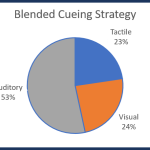Issue #304 – Wednesday June 10, 2020
The Pilates Hot Topic #2 Results
Touching and Teaching


Comments:
Sometimes in group classes i use a “body” to show the movement.
To assist my client, sometimes to calm my client, sometimes to focus attention, and sometimes to give some reiki.
We are in the business of helping people create new sensations in their bodies. There is no better or direct way of doing this than using the power of touch. Touch can invoke/evoke many sensation. I can tell you it’s one of the most powerful and potent tools I have in my bag.
To by-pass over-thinking from verbal cues & as a result this may save time, but isn’t the objective.
To give feedback to allow the student to learn where they should be in space.
Also sometimes a physical cue is required so that the client is aware of which part of their anatomy needs to activate.
To gather information as a teacher: my hands see more than my eyes.
To promote the learning and understanding of what they need to do however the motor learning research says that you should eventually limit and reduce tactile cuing for true learning and the transfer-ability of skills.
If I see someone might be endangering themselves I might dive in with a hands-on intervention, but I would consider that a failing in my teaching.
If verbal and visual cues just don’t seem to work.

If we take all respondents answers and blend them together into an “average” teacher, we see that they would use tactile cues about a quarter of the time, visual cues about a quarter of the time, and auditory cues about half the time – as pictured in the next two graphs.


Here are some examples of how to read the chart above:
Just over 45% of respondents use Tactile Cueing for between 0% and 20% of their cues
Roughly 35% of respondents use Visual Cueing for between 20% and 40% of their cues
Nearly 15% of respondents use Auditory Cueing for between 80% and 100% of their cues
The Pilates Hot Topic #2 Results – Student Survey


Is there anything else you would like to say about the use of hands-on modifications (tactile cueing) as part of receiving Pilates instruction?
Imagery and hands on are a very good combination to correct and help to improve.
I like being corrected, so I know I’m doing it correctly, and don’t feel the need to be asked each time for permission.
Absolutely necessary for my learning style.
I avoid teachers who do it, especially those who don’t ask for permission.
It’s useful to feel the positions and contractions of the body parts.
Sometimes, its difficult to figure out how to make a movement on your own. With hands-on corrections, you can feel where you should be, without having to figure it out. My Pilates instructor shows how with hands on the body.
It seems essential to me to adopt the right postures and feel my mistakes.
Tactile cueing is an integral part of understanding the Work!

This was clearly not a “black and white” question for many of our respondents, though we have simplified all responses to Yes or No for this graphic. Quite a few described “unnecessary” touching or “ineffective” touching – we counted those as “No” for purposes of this graphic. Even so, nearly 20% of the respondents answered clearly “Yes” or provided a description of touching that seemed clearly in the “inappropriate or unwanted” category.
If you answered “Yes” to the prior question and ONLY IF YOU ARE COMFORTABLE DOING SO, please share a bit about that incident.
After pregnancy and delivery, she hurt me by pushing very hard to “close” my ribs and “abs”
I’ve had a too strong touch with pulling my limb too hard, but I know this teacher got feedback and learned from it.
She pinched my booty to get me to tighten it while bridging.
Any touching is unwanted and inappropriate
It wasn’t sexual at all, but I had a couple of teachers that touch and touch without knowing that I also like to correct by my self, it’s so frustrating when they correct all the time that you are not allowed to move. It’s not Pilates anymore.

